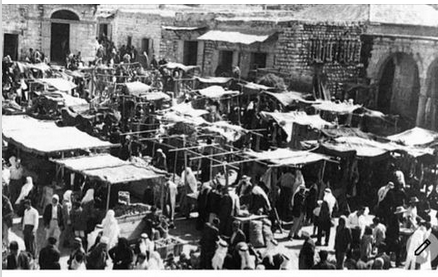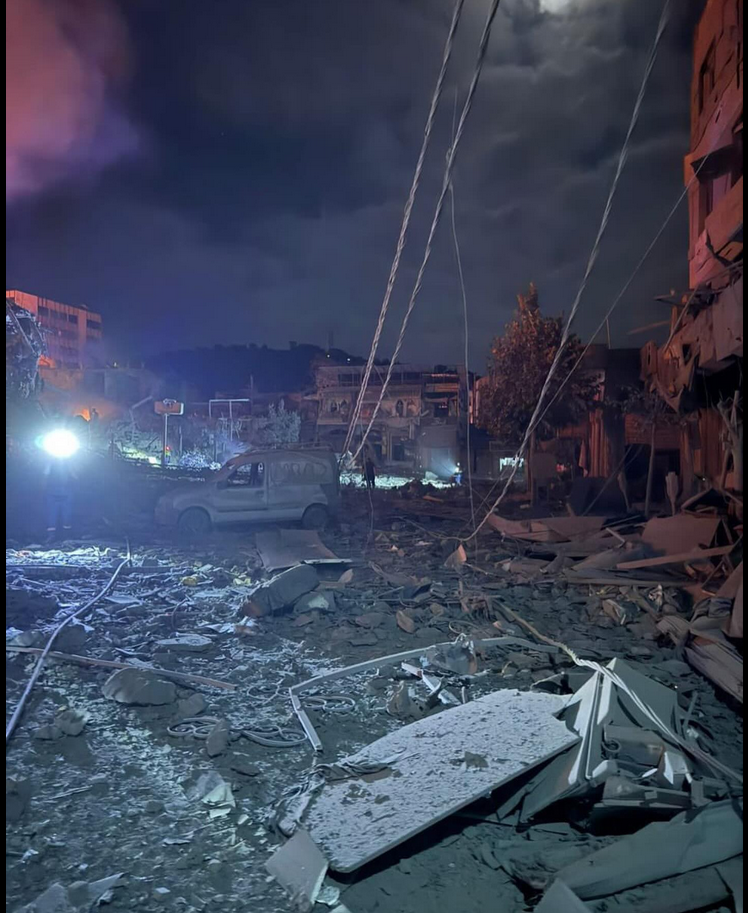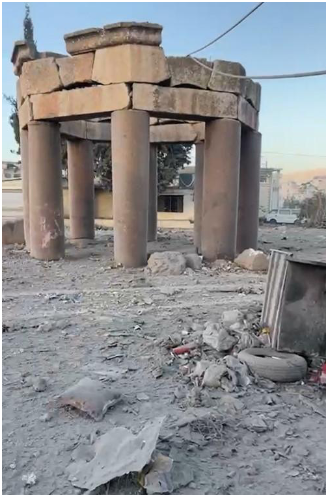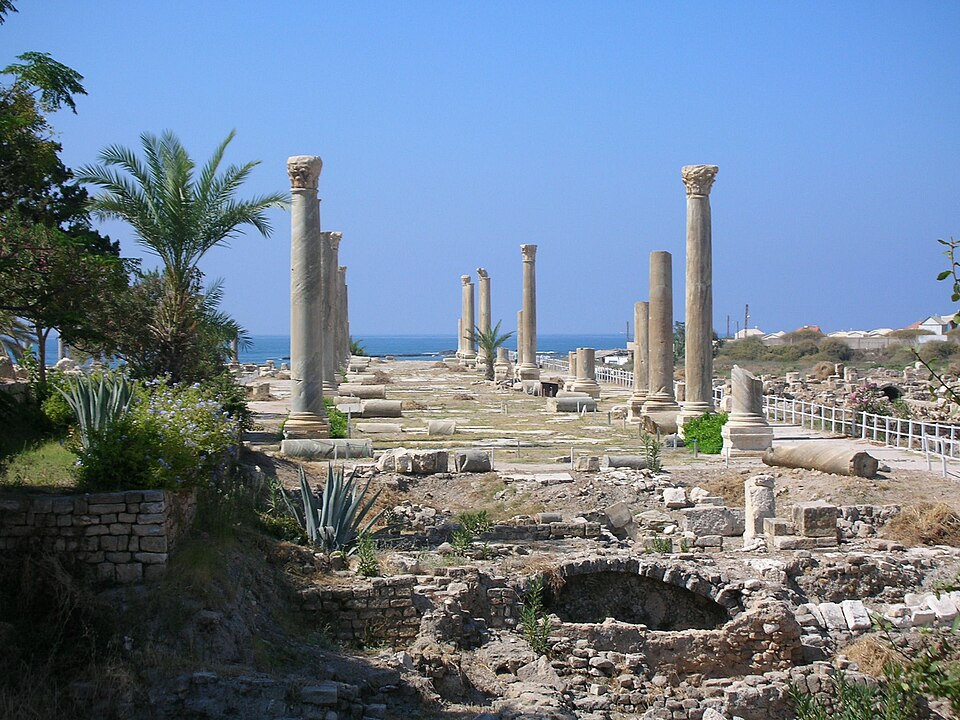A cultural centre in Nabatiyeh housed in a 150-year-old rural house, the Ottoman-era Kfar Tebnit mosque, the 150-year-old St George Catholic church in Derdghaya, and the late 19th-century Ottoman architecture, Al-Ithnain Al-Shaabi souk are just some of the heritage sites in southern Lebanon and Beirut that have been destroyed by the ongoing war in the region.
A preliminary report published by the NGO Heritage for Peace, in collaboration with the NGO Heritage Education Program and other partners in Lebanon, documents the dozens of heritage sites already damaged by bombing. Many others, such as the Baalbek World Heritage Site, are under threat because of their proximity to areas where rockets are fired or military operations take place on the ground.
Commenting on the report, Isber Sabrine, President of the international NGO Heritage for Peace, said: "Since mid-September, daily rocket attacks have hit regions such as South Beirut, the Beqaa Valley and the border areas, putting numerous heritage sites at risk".
The target of the project was to write a report, which sheds light on tangible and intangible cultural heritage loss, sites, monuments, cultural heritage spaces and resources in Lebanon considering this present war. The aim was not to reflect on those causing the destruction, but to report on this destruction in as many regions as possible, to address destruction first-hand status qos and suggest recommendations for protection and future preservations mechanisms.
In early October 2024, the Lebanese government, along with national organizations, UNESCO, and ICOMOS International, expressed serious concerns over the threats of both human and cultural loss due to the ongoing conflict. In parallel, local organizations within Lebanon and
internationally have stepped up, evolving from civic initiatives into non-governmental and civil society organizations that support the government’s efforts to document and highlight the destruction, emphasizing the urgent need to protect cultural heritage in all its forms.
Some of the monuments that have been reported damaged so far are the following:
The Chahine house is a 150-year-old traditional rural house, which became a cultural center in Nabatiyeh. Many local inhabitants identify with the house and its memory of space. The rockets have led to its complete destruction.

Old main square souks, which includes 12 historic residential buildings and 40 shops from the late 19th. Ottoman architecture, important square for local economy and trade since 150 years, was known as “Souk Al-Ithnain Al-Shaabi,” the market served as a hub for agricultural and artisanal products, providing essential goods for farmers and standing as a testament toNabatiyeh's economic and social history. Each shop in the market tells a story of the community's past. Historic shops, such as Falafel Arnaout, Kunafat Al-Sultan, Dimassi Sweet were destroyed completely.

The Fadel house, is a traditional house in Nabatiyeh and has undergone some damages to its roof and side walls due to a neighboring rocket.
Harouf heritage house and historic quarter Vernacular house and its surrounding traditional rural
quarter were heavily hit. The house is more than 150 years old, including typical stone arcades and vernacular features.
Derdghaya St. Georges Church was built 150 years ago, dedicated to St George for the Melike catholic community living in Derdghaya. It was newly restored. The parish building was heavily hit, with civil defense and civilians having been killed while taking refuge inside. The church had been hit several times before and restored in 1990.
Qubbat Douris is located around 3 km south of Baalbek and was probably built in the 13th c. Several Roman sarcophagi were excavated in Douris at the end of the 1990s and part of a Bronze Age settlement mound was discovered in 2018. Qubbat Douris was badly damaged from an airstrike on October 14th/15th. The extent to which the missile attacks destroyed archaeological
monuments such as the Bronze Age settlement mound can only be clarified after onsite investigations are possible.

Kfar Tebnit mosque is from the Ottoman period, with a minaret, and various prayer halls. The destruction hit the minaret and its building, as well as various buildings in its premises.
In the village of Mhaibib, there is a maqam (Muslim shrine) built for the biblical figure of Benjamin, last child of the patriarch Jacob.
Some of the monuments that are under threaten according to the report are the following:
Baalbek World Heritage Site. The settlement history of the city of Baalbek can be traced back to the 8th century BC. The city is best known for its imposing Roman ruins from the 1st – 3rd c. AD. Baalbek has been continuously inhabited up to the present day and a few remains from the Middle Ages and the Ottoman period, which are preserved in the old town and in Ras el-Ain, are under great threat from attacks. There is currently no known damage to monuments in Baalbek, but the impacts near the Qalaa may well have caused damage. According to reports, the rockets mainly fell west of the temple ruins and north of Ras el-Ain.
Temnine el-Fawqa and Temnine el-Tahta. The village of Temnine has been heavily hit in many strikes. The nympheum / temple is in Temnine el-Fawqa and has been possibly damaged. This is yet to be confirmed on site.
Majdel Anjar temple. Next to the modern settlement of Anjar are the remains of Umayyad city (called Anjar Citadel), which was founded by Al-Walid I. at the beginning of the 8th century. Majdal Anjar is located south of Anjar and 5 km from the Syrian border. Majdal Anjar as a village, was in particular the focus of rocket attacks.
Tyre World Heritage Site. The UNESCO world heritage site is a Located on the southern coast of Lebanon, 83 km south of Beirut, the antique town of Tyre was a great Phoenician city. The modern city of Tyre has been targeted several times.

You can read the full report here.
--
Douris photo: Municipality of Douris social media channel
Tyre photo author :Véronique Dauge
Photo source
Baalbek photo author: Vyacheslav Argenberg
Photo source
Souk Al-Ithnain Al-Shaabi photo: BlogBaladi
Photo source












